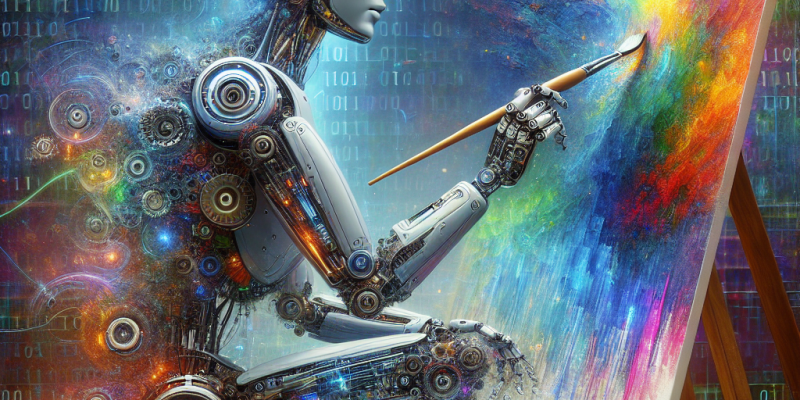AI Meets Creativity: Innovative Machine Learning Models Transforming Art and Design

In recent years, the intersection of artificial intelligence (AI) and creative expression has burgeoned into a dynamic field that is reshaping how art and design are conceived, created, and distributed. Innovative machine learning models are not only assisting artists and designers but also challenging traditional notions of authorship, creativity, and aesthetic value. This article explores the transformative potential of AI in the creative industries, highlighting key developments, tools, and the philosophical questions they raise.
The Rise of Creative AI
The use of AI in art and design has gained momentum thanks to advances in machine learning algorithms, particularly in deep learning and neural networks. These technologies allow machines to learn from vast amounts of data, enabling them to generate imagery, music, text, and even fashion designs that emulate human creativity.
Prominent examples include DeepArt, which uses a neural network to create artwork in the style of famous artists, and OpenAI’s DALL-E, a model that generates images from textual descriptions. Such tools have democratized art creation, giving anyone—from professional artists to hobbyists—the ability to explore their creativity in new and exciting ways.
The Tools of Transformation
1. Generative Adversarial Networks (GANs)
One of the most groundbreaking developments in the realm of creative AI is Generative Adversarial Networks (GANs). These models consist of two neural networks, a generator and a discriminator, that work in opposition to produce unique, high-quality outputs. GANs have been instrumental in creating stunning visuals, from hyper-realistic portraits to abstract designs. Notable projects like the “Edmond de Belamy” painting, which sold at auction for over $432,000, exemplify the commercial potential of AI-generated art.
2. Style Transfer
Style transfer techniques enable machines to apply the style of one image onto another, creating visually striking results. This has been widely adopted in graphic design, video production, and photography. Software applications like Prisma and Adobe’s painting tools allow users to blend their photographs with famous art styles, making art more accessible and inspiring new artistic techniques.
3. Composition and Generative Design
In design fields such as architecture and product development, AI-driven generative design tools have revolutionized the creative process. Software like Autodesk’s generative design platform uses algorithms to propose thousands of design options based on specific parameters and user guidelines. This approach reduces trial and error, inspiring designers to focus on innovation while relying on AI to manage complexities.
Collaboration, Not Replacement
While some may view AI as a potential threat to artists and designers, the reality is that AI serves as a collaborator that enhances the creative process rather than replacing human ingenuity. Musicians, for instance, have started experimenting with AI-generated compositions to inspire new melodies and harmonies, marrying technology with traditional music-making.
In visual arts, technologies like Runway ML and Artbreeder allow artists to manipulate AI outputs, leading to collaborative projects where human judgment, emotion, and expertise play central roles. This symbiosis opens up avenues for exploration and innovation, allowing creators to push the boundaries of what is possible.
Ethical Implications and Debates
The integration of AI in creative fields invites significant ethical questions. Issues related to authorship arise; who owns a piece of art generated by AI? Is it the developer of the algorithm, the user who prompted the creation, or the AI itself? Additionally, there are concerns about the potential for AI to inadvertently perpetuate biases present in training data, affecting the diversity and inclusivity of artistic representation.
Furthermore, the question of authenticity looms large. As AI-generated works proliferate, can we still ascribe value to art based on human emotion and experience, or does the infusion of technology alter our perception of what constitutes "art"?
The Future of AI in Art and Design
As we look ahead, the potential for AI in creative industries appears limitless. The technology will likely evolve to provide deeper customization, facilitating more personal and meaningful artistic expressions. Moreover, as AI becomes more integrated into educational platforms, the next generation of artists will learn to leverage these tools intuitively.
In summary, AI is not merely a tool for art and design but a transformative force that is expanding the horizons of creativity. By melding human ingenuity with machine learning, artists and designers are forging a new path that honors tradition while embracing innovation. The future promises an exciting collaboration between man and machine, redefining what it means to create and appreciate art in the 21st century.














